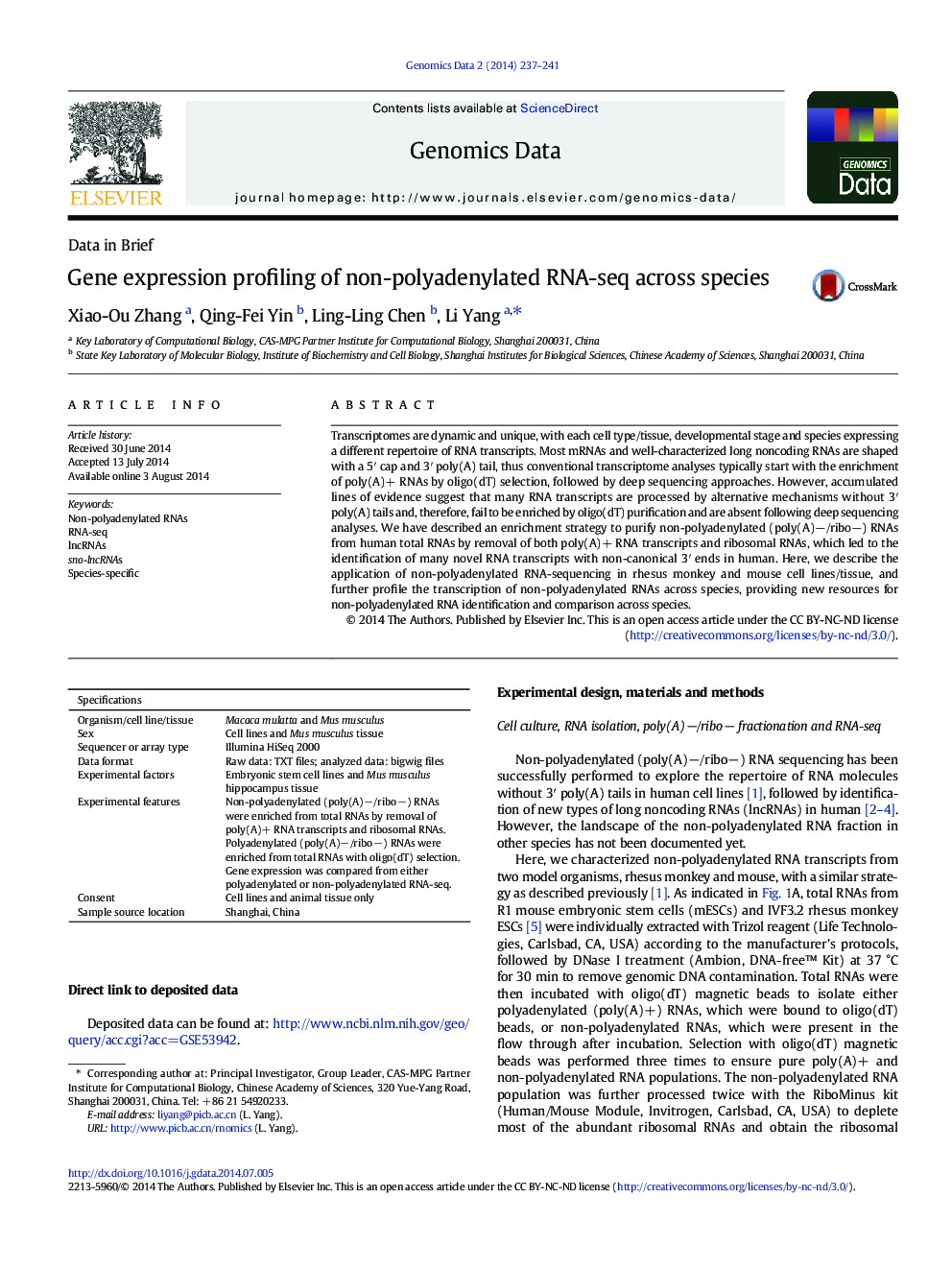| Article ID | Journal | Published Year | Pages | File Type |
|---|---|---|---|---|
| 2822267 | Genomics Data | 2014 | 5 Pages |
Transcriptomes are dynamic and unique, with each cell type/tissue, developmental stage and species expressing a different repertoire of RNA transcripts. Most mRNAs and well-characterized long noncoding RNAs are shaped with a 5′ cap and 3′ poly(A) tail, thus conventional transcriptome analyses typically start with the enrichment of poly(A)+ RNAs by oligo(dT) selection, followed by deep sequencing approaches. However, accumulated lines of evidence suggest that many RNA transcripts are processed by alternative mechanisms without 3′ poly(A) tails and, therefore, fail to be enriched by oligo(dT) purification and are absent following deep sequencing analyses. We have described an enrichment strategy to purify non-polyadenylated (poly(A)−/ribo−) RNAs from human total RNAs by removal of both poly(A)+ RNA transcripts and ribosomal RNAs, which led to the identification of many novel RNA transcripts with non-canonical 3′ ends in human. Here, we describe the application of non-polyadenylated RNA-sequencing in rhesus monkey and mouse cell lines/tissue, and further profile the transcription of non-polyadenylated RNAs across species, providing new resources for non-polyadenylated RNA identification and comparison across species.
